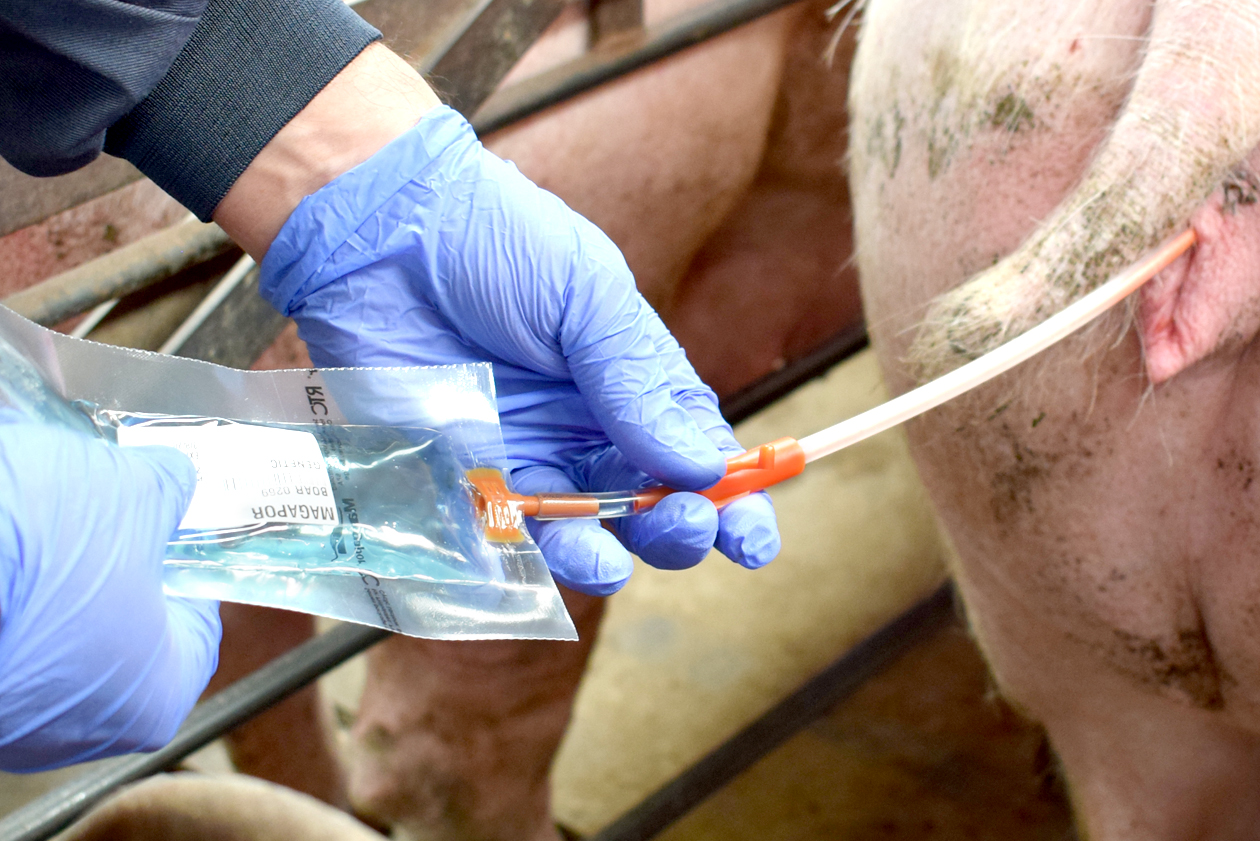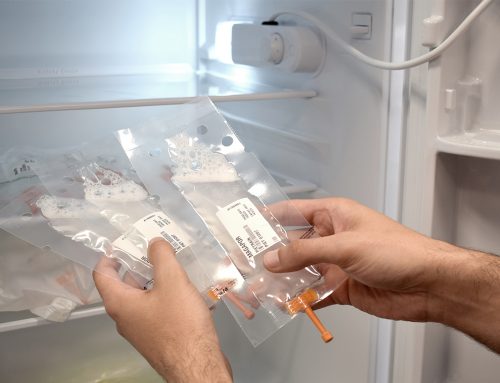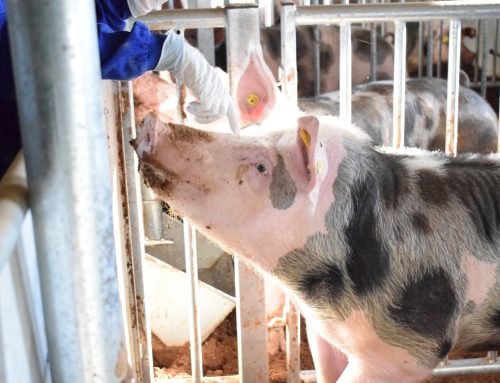Currently, due to its simplicity, easy handling and the results obtained, the performance of post-cervical insemination as an insemination technique is increasingly relevant in the swine industry and in constant evolution. Although it is mainly developed in multiparous sows, there is no problem to do it also in gilts, with a series of tips.
Some of the advantages of post-cervical insemination that we find for the swine industry are:
- A lower number of sperm is necessary and therefore we get a higher number of seminal doses per ejaculate. By increasing the number of doses per ejaculate, the number of boars needed to inseminate the same number of sows will decrease. By decreasing the population of boars, the value of the average genetic index will be higher and therefore the genetic improvement will be reached to piglets in a faster way.
- Decreasing the volume and number of sperm per dose, the price of these will be lower. In addition to this saving in doses, it allows the farmer to invest in doses with a greater genetic value.
- Another of the repercussions of being able to inseminate the same number of breeders with a smaller population of boars is a more homogeneous offspring, this facilitates the standardized and uniform work along the entire production chain, including their slaughter and slaughterhouse work.
In addition to general advantages, there are a number of specific and immediate advantages on the farm:
- It’s a faster technique. The average time to practice this type of insemination is about 3 minutes, while in traditional insemination this time increases to 5 or even 10 minutes approximately.
- This is a more efficient technique since a smaller number of sperm is used to successfully inseminate a sow. In addition, the above-mentioned time savings result into less time spent on insemination, which makes it possible to invest that time in other activities.
- It is safer than other techniques. In this way, we ensure that the semen is introduced into the interior of the uterus without suffering any type of backflow during the insemination.
The instruments that we need in this type of insemination in most cases are the guide catheter accompanied by a suitable probe for the type of breeder that we are going to cover (gilt or multiparous).
The guide catheter is fitted to the female’s reproductive tract. It is indifferent to use a foam catheter than a spiral catheter to get a good result. The choice is individual, depending on the customs of the workers. A spiral catheter allows its anchoring to the wide part of the cervix, while the foam catheter allows a simple introduction into the genital tract avoiding possible trauma. The latter is a simpler design for a simpler insemination technique adapting to the female’s cervix. Its foam expands by absorbing the fluids from the sow making plug in the cervix to avoid backflow.
In order to choose the right probe we have to take these three aspects into account:
- Length: to reach the body of the uterus.
- Tip hard and firm enough to guide the catheter through the cervix without piercing it.
- Flexible enough to pass through the cervix without damaging it and without bending over itself and collapsing. In the event that it bends, it must have memory to know that it has bent.
In Magapor we have different types of probe, adapting to different situations and differentiating in the flexibility of their materials:
MAGAX
- You do not need a guide catheter, it is more rigid than the rest
- The unique tip design ensures a smooth and innocuous sliding of the probe through the cervix.
- Insemination time is reduced as a guide catheter is not necessary
- It incorporates a rear adapter compatible with most of the containers on the market both.
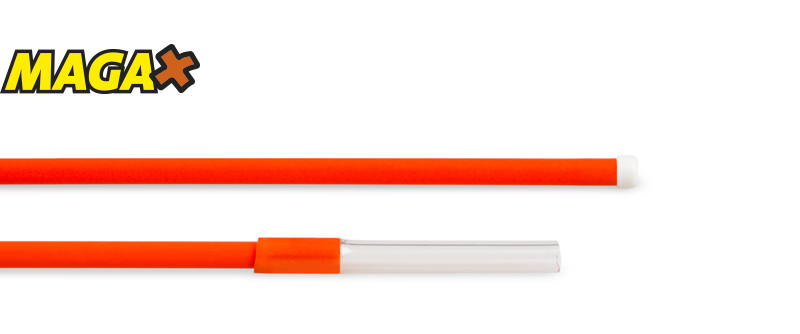
MAGAXS
- Designed for multiparous sows
- The tip is adjusted with the catheter foam as a stop to prevent it from coming out.
- Ensures smooth and innocuous sliding of the probe through the cervix.
- The probe has optimal flexibility for its correct introduction and deposition of the dose in the right place.
- It incorporates a rear adapter compatible with most of the containers on the market both.
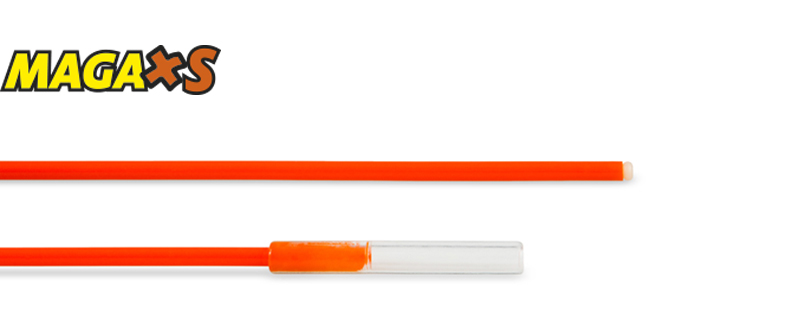
MAGAXN
- First probe specially developed for gilts, with a specific length and diameter for them.
- Tip integrated into the probe to avoid any risk of injury inside.
- It incorporates a rear adapter compatible with most of the containers on the market both.

MAGAXDD
- First mixed insemination system in swine species market. It combines in a simple way and in the same insemination the techniques of post-cervical and deep intrauterine insemination.
- Approximately 80% of the dose is deposited in the postcervical area, through two opposite holes made with a specific diameter, and the remaining 20% is deposited through a distant hole in the utero-tubaric junction or inside one of the uterine horns.
- Safe system, does not cause injury to the sow and easy farm handling.
- Double deposition, guaranteeing the distribution of semen through both horns. The decrease in prolificacy observed with deep intrauterine insemination systems due to unilateral fertilization is avoided. This double deposition allows sperm access to the oocytes of both horns, which guarantees maximum levels of prolificacy.
- Frontal deposition of the dose.
- The dose is introduced under pressure.
- It incorporates a rear adapter compatible with most of the containers on the market both.
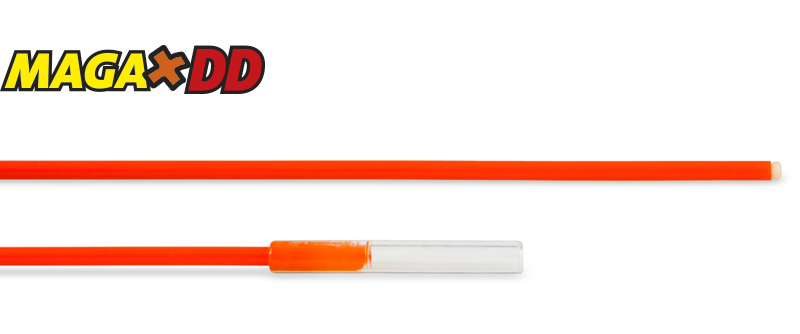
Which one suits your farm best?

